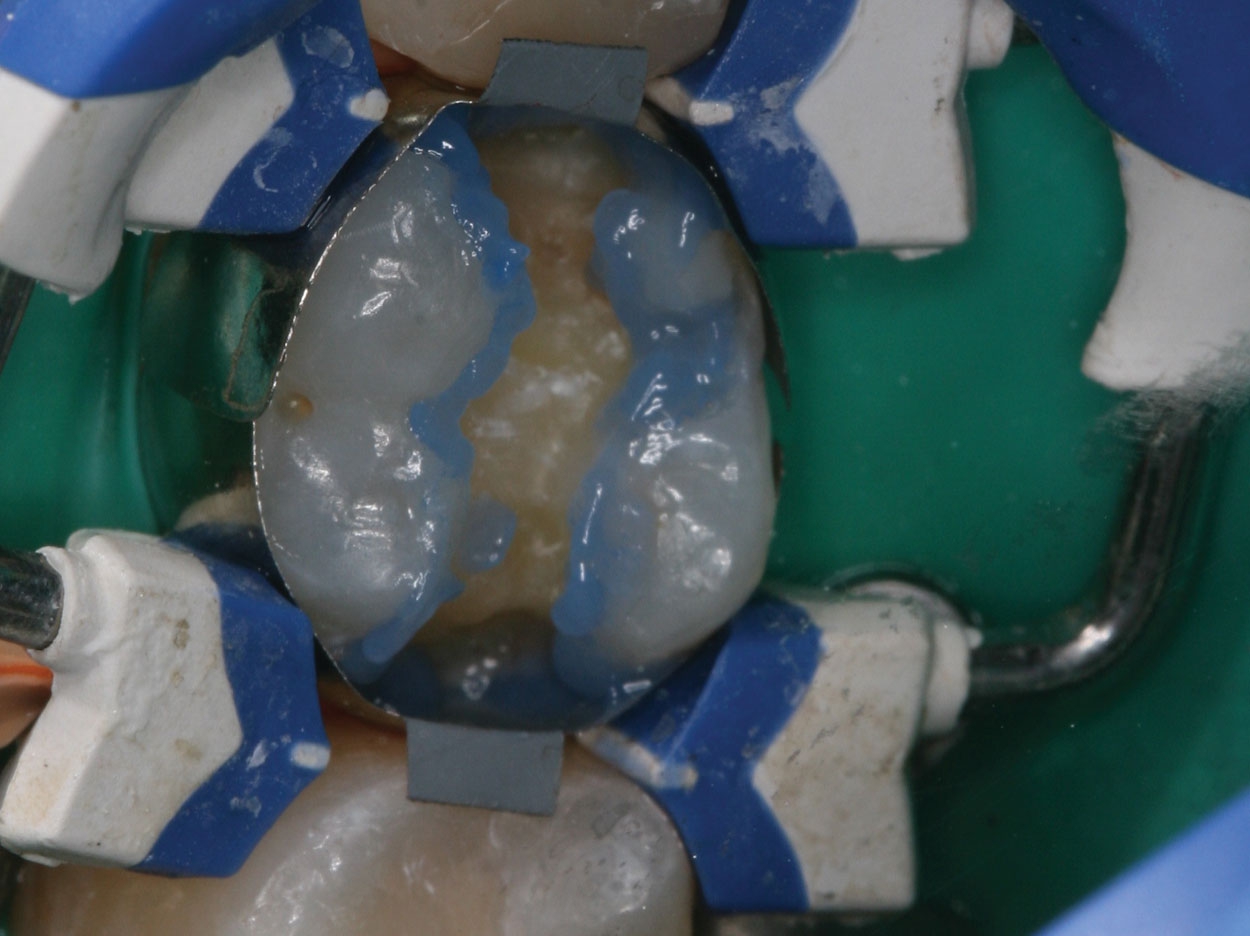
The use of composite resin for direct posterior restorations is often accompanied by technical difficulties, namely postoperative sensitivity, imperfect interproximal contact and contour, and the challenge of creating an aesthetic shade match. The following is a case report that addresses some of these challenges.
Case Report
A 28-year-old female came to my office seeking a second opinion. After a series of recent fillings and the recommendation of numerous crowns by another dentist, the patient became disillusioned because some of her basic complaints were not being addressed. Despite being in active treatment, my exam revealed multiple carious lesions, open contacts, and overhanging restorations. She also had numerous pre-carious cervical lesions.
Mesial and distal decay was detected on tooth No. 30, and mesial and occlusal decay was detected on tooth No. 31. An initial tooth shade of A3 (VITA Classical Shade Guide) was determined (Figure 1). After administration of local anesthetic, a rubber dam was placed for isolation. An old composite restoration, which existed on the occlusal of tooth No. 30, was deemed to be unsatisfactory. Using a 330 carbide bur, followed by slow-speed carbide round burs for caries removal, I prepared the tooth for an MOD restoration. Then, with the distal box of tooth No. 30 open, I was able to get direct access to the decay on the mesial of tooth No. 31. Studies have shown that the greatest loss of a tooth’s relative cuspal stiffness results from loss of marginal ridge integrity.1 Using the same burs, I prepared the mesial cavity on tooth No. 31 and then separately prepared the occlusal cavity.
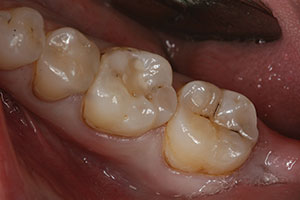 |
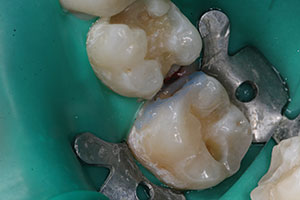 |
| Figure 1. Pretreatment photo. | Figure 2. MOD prep on tooth No. 30; occlusal and separate mesial preps on tooth No. 31. Selective etch applied to mesial of tooth No. 31. |
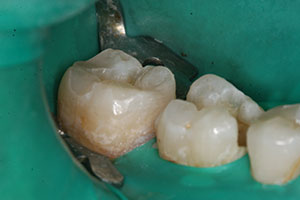 |
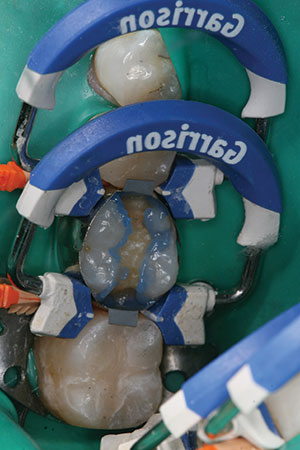 |
| Figure 3. The result after placement and light curing of OMNICHROMA (Tokuyama Dental America) on the mesial of tooth No. 31 prior to finishing, demonstrating excellent shade match. | Figure 4. The result after completion of occlusal on tooth No. 31. Composi-Tight 3-D Fusion kit (Garrison Dental Solutions), wedge, and layered ring placement on tooth No. 30 for simultaneous restoration of mesial and distal boxes. Selective etch is in place. |
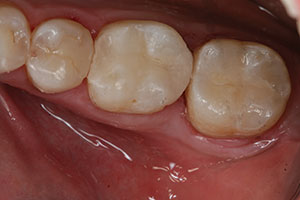 |
| Figure 5. Completed restorations on teeth Nos. 30 and 31, demonstrating tight interproximal contacts and excellent shade match. |
Post-op sensitivity has been an issue for many patients and remains a frustration for many restorative dentists. I long ago conquered that problem with the use of a sixth-generation self-etching adhesive (CLEARFIL SE Protect [Kuraray Noritake]). I also employ the selective-etch technique to ensure the strongest bond to the surrounding enamel (Figure 2).
Matching the shade of the restoration to that of the tooth will yield an aesthetic result, but sometimes selecting the proper shade is difficult, or it may be a shade of material not in the doctor’s inventory. I chose to use a unique material, OMNICHROMA (Tokuyama Dental America). It contains supra-nano-sized spherical filler particles that reflect light of the yellow and red spectrum, allowing the composite to blend with the surrounding dentition. Its ability to match all 16 VITA Classical shades eliminates the decision-making process of shade selection, and the material has impressive physical properties. The material, which is opaque and white, blends with its surroundings upon curing (VALO curing light [Ultradent Products]). Figure 3 shows the near-perfect shade match on the mesial of tooth No. 31.
One of the problems that continues to plague dentists is inadequate contact with neighboring teeth. The use of pre-curved sectional bands and separating rings addresses that issue (Composi-Tight 3-D Fusion kit [Garrison Dental Solutions]). After placing the matrices mesial and distal and layering the separating rings (Figure 4), I set about doing the incremental buildup of the MOD on tooth No. 30 using CLEARFIL SE Protect and OMNICHROMA. The restorations were shaped with ultrafine, football-shaped, and flame-shaped diamond burs and polished with Enhance Finishing Cups (Dentsply Sirona) and Groovy Diamond Polishing Brushes (Clinician’s Choice Dental Products). Figure 5 shows the completed restorations.
For more information, call Tokuyama Dental America at (877) 378-3548 or visit tokuyama-us.com.
References
1. ES Reeh et al. Reduction in Tooth Stiffness as a Result of Endodontic Procedures. J Endod. 1989;1:512-516.
Dr. Rosenfeld is a graduate of Cornell University and Northwestern University Dental School. He served a one-year general practice residency and a second year as chief resident at Long Island Jewish Medical Center. He is currently a general dentist who practices in Westwood, NJ. Dr. Rosenfeld is an attending clinician at the general practice residency program at Hackensack University Medical Center. He has advanced training in aesthetic dentistry and is on faculty at the Nash Institute for Dental Learning in Charlotte, NC.












